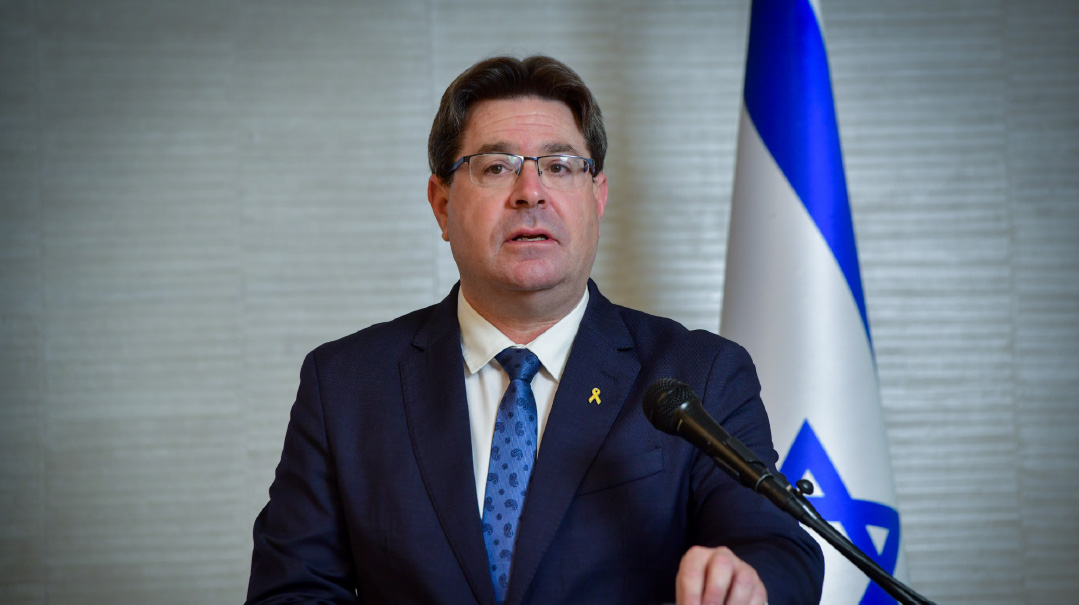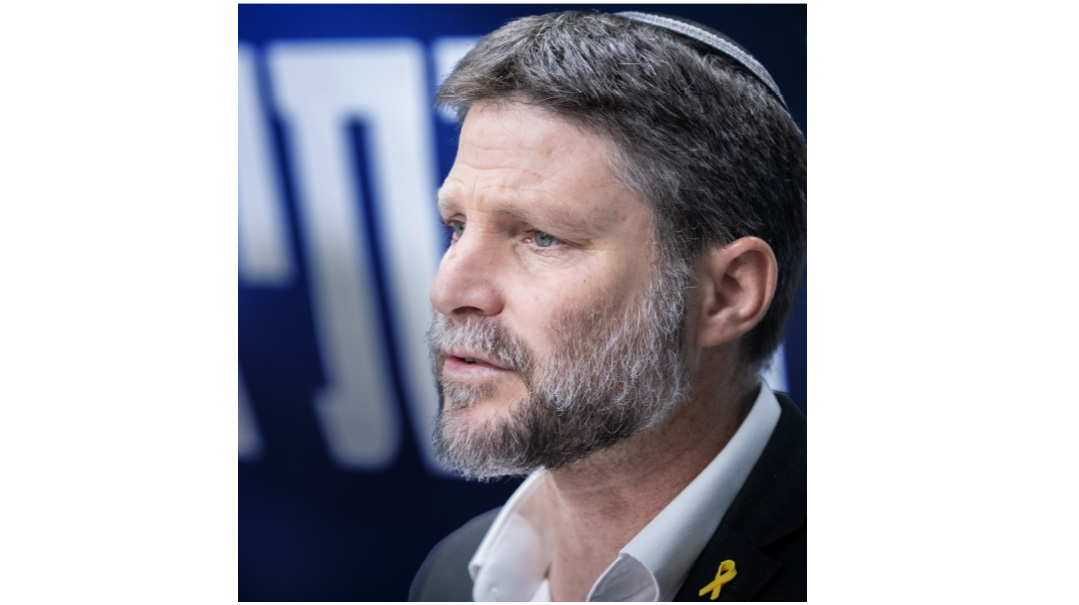Yerushalayim, Your City

We’re so used to Yerushalayim in ruins, we don’t realize there’s anything better

T
wo thousand years of galus has left its imprint in innumerable ways. We are so far removed from the reality of Geulah, we’re often indifferent to the miracles the Redemption vows to fulfill. I’ve had difficult conversations with students who struggle to understand how Yerushalayim, vibrant and bustling with people, is currently in a state of destruction. And truthfully, with new buildings going up on every corner, shuls and yeshivos filled with pious Jews, and shops catering to every whim and desire, it’s challenging to reconcile a typical Yerushalayim street scene with ruin and desolation.
Whether we call Yerushalayim our permanent home, or reserve apartments and hotel rooms for Succos, it’s easy to forget that modern Jewish sovereignty over the city is a substandard surrogate for the authority we’ll have when Mashiach arrives.
I have a friend who, upon purchasing and renovating her apartment in Yerushalayim, deliberately hung multiple pictures of the Beis Hamikdash on her walls, a reminder that His home is yet incomplete.
Another, perhaps more dramatic expression of this sensitivity, is the story of Rav Mordechai Gifter, who moved to Telz Stone in the late 1970s to establish a branch of the Telshe Yeshivah on holy soil. Two years later he was recalled to America, where he was handed back the reins of the Cleveland yeshivah following the sudden petirah of Rav Boruch Sorotzkin. But upon returning to America, after living with both the glory of Eretz Yisrael and the devastation of a Shechinah with no home, Rav Gifter refused to occupy a permanent address. He chose instead to live out his days in an apartment within the yeshivah building. If the Shechinah was homeless, how could he dwell in a permanent abode?
This is the sensitivity and sentiment necessary to approach the brachah of V’liYerushalayim. For all its modern practicality and function, Yerushalayim is a city in rags, a hopelessly impoverished version of its genuine spiritual self.
Rav Yehonasan Eybeschutz’s characteristic explanation of the Shemoneh Esreh takes an unprecedented detour with the brachah of V’liYerushalayim: “There is no need to expand [our explanation of this brachah], rather we must shed continuous tears over the rebuilding of Yerushalayim and reinstating the crown of Dovid… if we are without Yerushalayim and the Davidic dynasty, what purpose is there to life?”(Yaaros D’vash).
His final words on the brachah are particularly jarring if we consider how utterly removed we are from their true import: “Seeing how the destruction of the Mikdash and loss of Davidic monarchy has left us bereft and absent of all good, as one descending from life to death, so, too, when Hashem restores Tzion we’ll arise from death to life… and he who still retains a nishmas Yisrael, his heart shatters from within when reflecting on the ruins of the Mikdash….” (ibid.).
Bereft and absent of all good? Descending from life to death? Shattered hearts? Does our perspective on modern Yerushalayim correlate even vaguely to these metaphors?
Rav Chaim Friedlander addresses this phenomenon and explains that if we understood the true spiritual and physical grandeur of Yerushalayim Habenuyah, the essence of the rebuilt city, we wouldn’t be blinded by the abundance of buildings and people and would realize that, indeed, we are currently living in a bira amikta, a deep, dark abyss.
Imagine an underground city with all the amenities and features of a regular city. Homes, stores, schools, people; it lacks for nothing. Nothing, that is, except for natural sunlight, soft breezes, birds, grass, trees, flowers, weather patterns, clouds, and fresh air, to name a few. The residents live in blissful oblivion, assuming that their severely compromised lifestyle is indeed ideal. They don’t know any better, but we do. We pity them their substandard existence, but even more so, we pity their utter ignorance of life above ground.
We are these unfortunate underground city dwellers. So accustomed and satisfied are we with Yerushalayim in a state of ruin, we don’t even begin to fathom there’s anything better.
This is one way of understanding the wording of the brachah, “V’liYerushalayim… b’rachamim tashuv.” The Avnei Eliyahu explains the attribute of rachamim as the reaction to someone whose dejected, shattered state arouses our sympathy. The current state of Yerushalayim in ruins is a paradigm for arousing rachamim, and therefore this is what we ask of Hashem.
Rav Chaim Friedlander continues, and reminds us that in the rebuilt city of Yerushalayim, Ir Hashem, the kedushah will be so overpowering that everyone who encounters it will find himself affected and inevitably boosted to a heightened level of yiras Hashem.
This sentiment is echoed in the Bach’s explanation on “V’sishkon b’sochah — may You dwell within it.” He explains that this refers to the Shechinah of the Beis Hamikdash. The singular purpose for rebuilding Yerushalayim is that the Shechinah may return to both the Mikdash and the city.
In contrast to the previous two Batei Mikdash, which were built by man, the Mikdash we daven for here will be built “uvnei osah,” by Hashem Himself. As we say in the tefillah of Nachem, “For You torched it with fire, and You will, in the future, rebuild it with fire.”
“Mikdash Hashem konenu Yadecha” (Shemos, 15:17), the sanctuary prepared by Your hands, hints to the fact that Hashem will eventually deliver a perfectly constructed Mikdash from On High. A Divinely constructed sanctuary will be indestructible, a true “Binyan Olam.”
The Ramchal (quoted by Rav Chaim Friedlander) explains this idea with a kabbalistic twist and says that the Heavenly Sanctuary will spread itself until its edifice reaches the physical world. We will then build a physical structure upon it, while maintaining its celestial roots.
A Mikdash built by Hashem is incapable of being destroyed, because if it’s built by Hashem, it is immune to our sins. When we built the Mikdash, its existence was a function of our capabilities, and therefore its right to exist was dependent upon our behavior. When Hashem is the Master Builder, the edifice is dependent on Him alone, impervious to our spiritual failings. This is a true “Binyan Olam”.
Perhaps the most significant difference between the construction we witness in Yerushalayim today and the “binyan” we daven for in this brachah is the question of motive. When a Jerusalem contractor embarks on a building project, for all his lofty intentions, his chief concern is profitability. Will he manage to sell all the apartments? Will his costs outstrip his profit margin? Perhaps, if he’s a particularly idealistic person, he’ll appreciate his role in securing a more Jewish presence in the capital city.
However, when we refer to Yerushalayim in this brachah, we declare “V’liYerushalayim Ircha,” Your city. This reframes our core desire in rebuilding the city. It’s not about profit, or beauty, nationalism, or power. It’s about Hashem returning to His city, banishing the galus, and unleashing an overwhelming wave of His Shechinah.
It’s the authentic Yerushalayim we have yet to meet, light-years away from the one we know of today. It’s Yerushalayim Ircha.
(Originally featured in Family First, Issue 879)
Oops! We could not locate your form.




